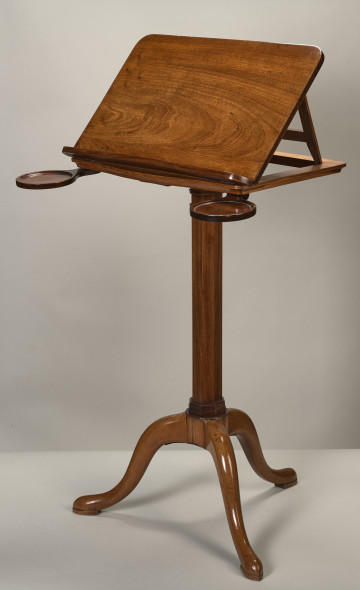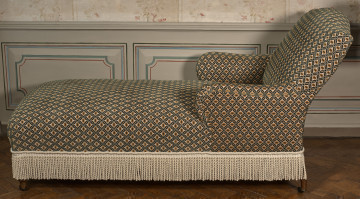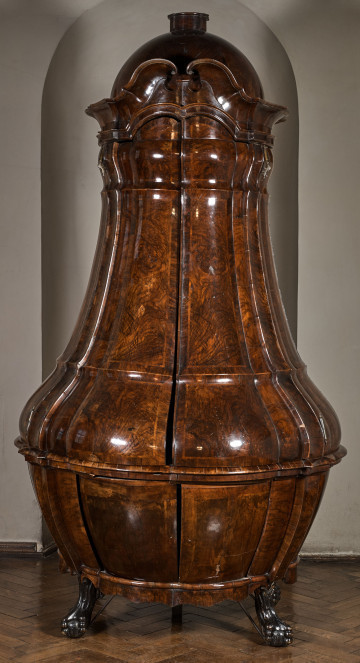
Wooden desktop
18th-19th century
Castle Museum in Łańcut
Part of the collection: Furniture and interior furnishings
This is a chair. A Rococo piece of furniture. Focused on its origin, stylistic features, shape and decoration, we forget that it actually had a utilitarian and representative function. Its skeletal construction is one of the most commonly used in modern times. The base of the seat is made up of a frame consisting of four joined stiles. From underneath, curved legs, which in Rococo chairs usually have no joints, emerge from the corners of the frame. The side stiles of the backrest are an extension of the back legs. The backrest structure is closed by horizontal stiles. In the presented piece there is a clearance between the seat and the backrest, which are both fully upholstered. The frame of this piece of furniture is shaped and decorated in a typical Rococo style. Originating in France during the reign of King Louis XV, the Rococo style spread throughout Europe. In Austria and the areas influenced by the Habsburg dynasty, Rococo experienced its greatest boom during the reign of Empress Maria Theresa Habsburg. The Central European variety of Rococo is called the Maria Theresa style or the Theresian style as a tribute to her. In this variety the Rococo, decoration is an addition to the construction and does not affect the tectonics of the furniture, as can be seen on the object in question. Teresa Bagińska-Żurawska https://orcid.org/0000-0002-9243-3967
Author / creator
Dimensions
height: 96 cm, width: 58 cm
Object type
Furniture and interior fittings
Technique
carpentry
Material
wood
Creation time / dating
Creation / finding place
Owner
Castle Museum in Łańcut
Identification number
Location / status

18th-19th century
Castle Museum in Łańcut

20th century
Castle Museum in Łańcut

18th century
Castle Museum in Łańcut
DISCOVER this TOPIC
National Museum in Lublin
DISCOVER this PATH
Educational path